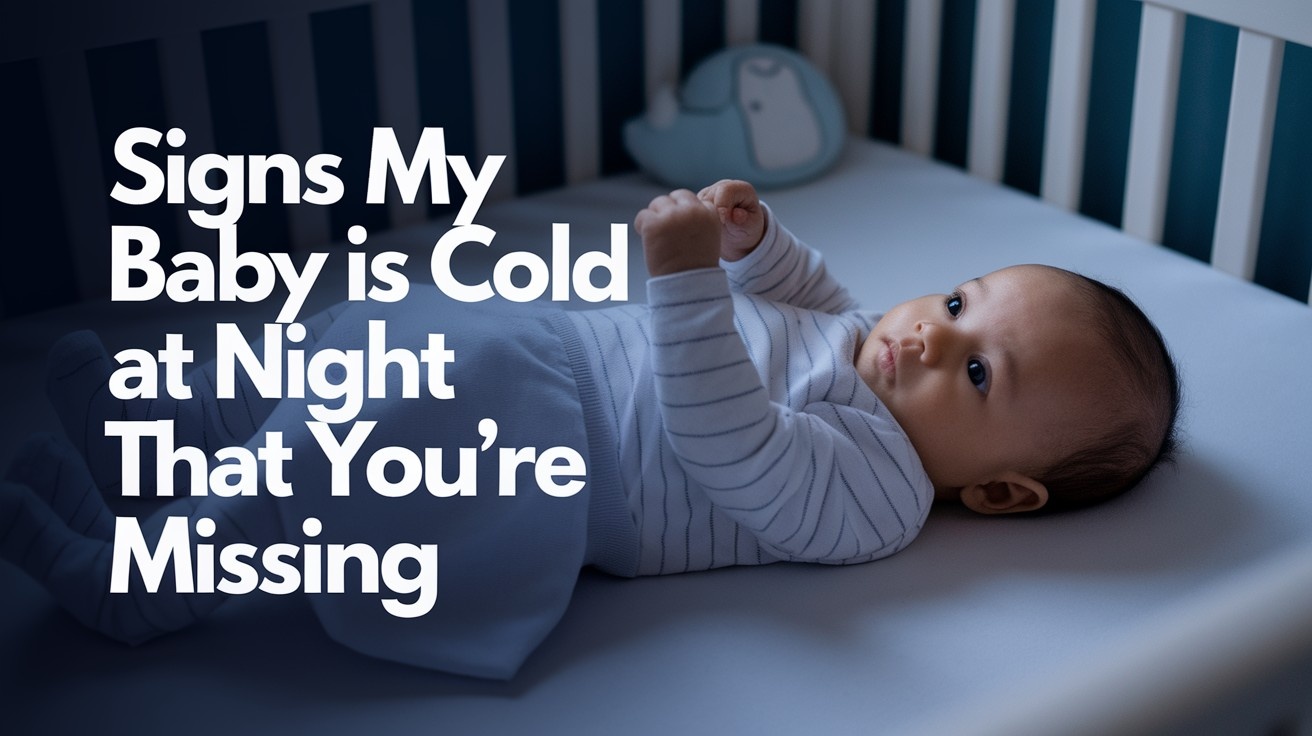
As the temperature dips during the night, your baby might be giving off subtle signs that they’re not as warm and cozy as they should be.
From chilly hands and feet to disturbed sleep or a pale complexion, these gentle cues often go unnoticed—but they matter!
Babies can’t regulate their body temperature as well as adults, which makes it even more important for parents to stay alert to these signals.
In this blog, we’ll investigate the key signs that your baby may be too cold at night and what you can do to help.
You’ll learn how to assess your baby’s comfort, layer their clothing properly, maintain a safe room temperature, and use secure swaddle alternatives.
Let’s ensure your little one sleeps soundly—warm, safe, and perfectly content.
Importance of Monitoring Your Baby’s Temperature
Babies can’t control their body heat like adults can. They lose heat quickly, especially through their heads and hands. Watching your baby’s temperature helps prevent them from getting too cold or too hot.
Both can be dangerous. Use touch to check if your baby feels warm enough but not sweaty.
Recognizing Signs Your Baby Is Cold at Night
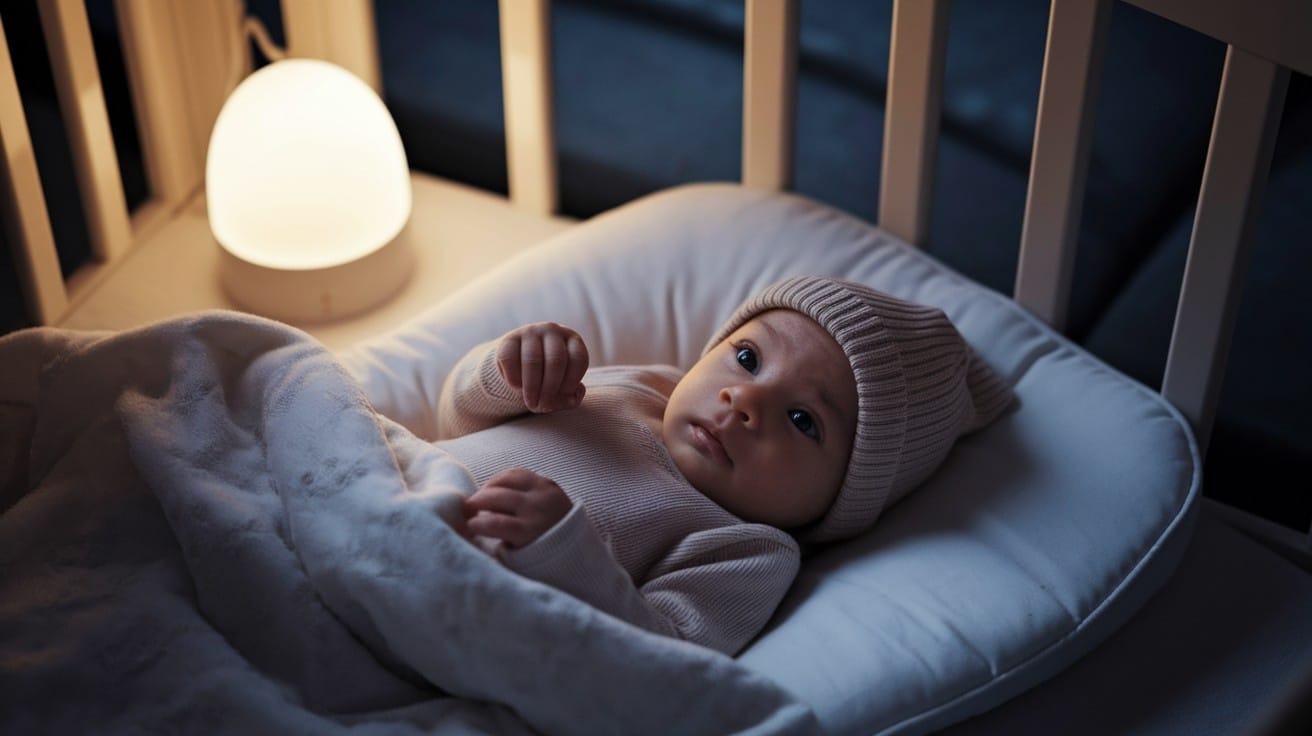
When babies get cold at night, they show certain signs. These include cold hands and feet, fussiness, and changes in skin color. Your baby might also sleep poorly or cry more when lying down.
Learning these signs helps you know when to add another layer or adjust the room temperature for your baby’s comfort.
What to look for: Cold extremities, disturbed sleep, pale skin, shivering, and increased irritability
Cool Extremities & Skin Changes
Babies’ hands and feet often feel cool to touch. But if they feel very cold, it could mean your baby needs more warmth. Check your baby’s tummy and back, too. These areas should feel warm, not hot or cold.
Cold babies sometimes look pale or have blotchy skin. Their lips might look slightly blue if they’re very cold. Normal baby skin has a pinkish tone. If your baby’s skin looks paler than usual or has red and white patches, it might be chilly.
Pro Tip: Place your hand on your baby’s chest or back instead of checking hands or feet, which are often naturally cooler.
Sleep Disruptions & Behavioral Signs
A cold baby often has trouble sleeping well. They might:
- Wake up more often than usual
- Sleep restlessly with more movement
- Cry briefly during sleep
- Become fussy or clingy
Babies often shiver when cold, just like adults. You might notice small trembling movements in their chin or body. Some babies clench their fists when cold. Not all cold babies will shiver, though. Very young babies might not shiver at all.
Irritability & Breathing Changes
A cold baby often gets upset when placed in its crib. The mattress might feel cold compared to being held in warm arms. The baby might cry as soon as it touches the bed, even if it was calm before.
Cold babies sometimes breathe faster or take shallow breaths. Normal baby breathing is easy to miss – about 40 breaths per minute. If breathing seems faster or you can hear it more clearly, check if your baby is cold.
Always make sure nothing blocks their nose or mouth while sleeping.
Steps to Keep Your Baby Warm at Night
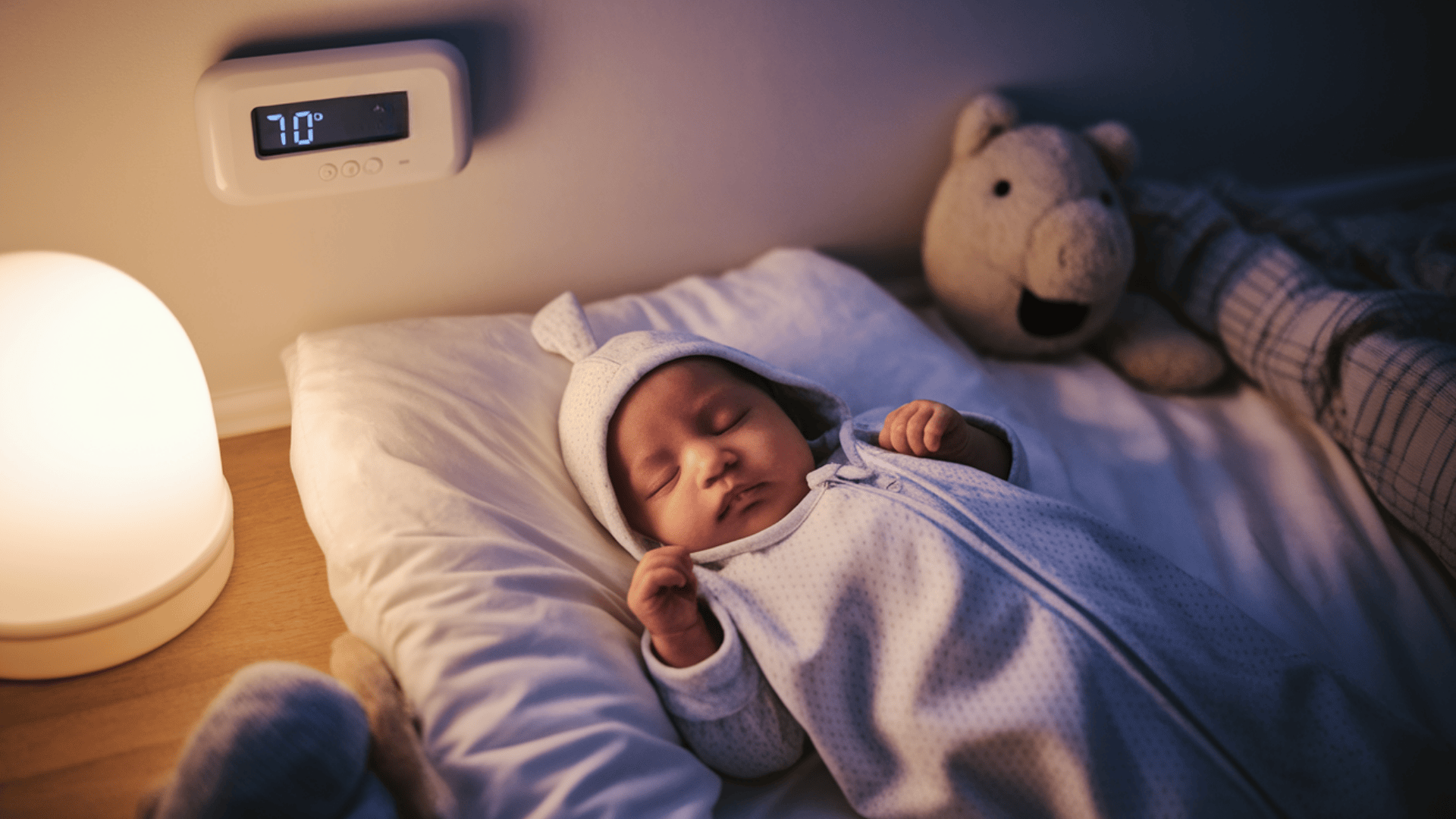
Keeping your baby warm without overheating them takes some care. Use the right clothes and bedding for the season. Keep the room at a good temperature, not too hot or cold.
Check on your baby during the night, especially when the weather changes or when they’re very young.
Dressing Your Baby Appropriately
Dress your baby in layers that you can add or remove easily. For sleep, use footed pajamas or a sleep sack instead of blankets. Babies need one more layer than adults in the same room.
- Make sure clothes aren’t too tight.
- Cotton works well against their skin.
- Never cover your baby’s head while sleeping.
Creating a Warm Sleep Environment
Keep your baby’s room between 68-72°F (20-22°C). Use a room thermometer to check. With short sleeves, you should feel comfortable in the room.
Quick Checklist:
- Position the crib away from windows, doors, or vents
- Use fitted sheets that aren’t cold to touch
- Consider warming the crib briefly before placing the baby down
- Use a sleep sack rather than loose blankets
Check your baby’s temperature by touching the back of their neck or tummy. These spots should feel warm, not hot or cold.
Do this when you put them to bed and when you check on them. If your baby feels too warm, remove a layer. If they feel cool, add one.
Understanding Baby Temperature Regulation
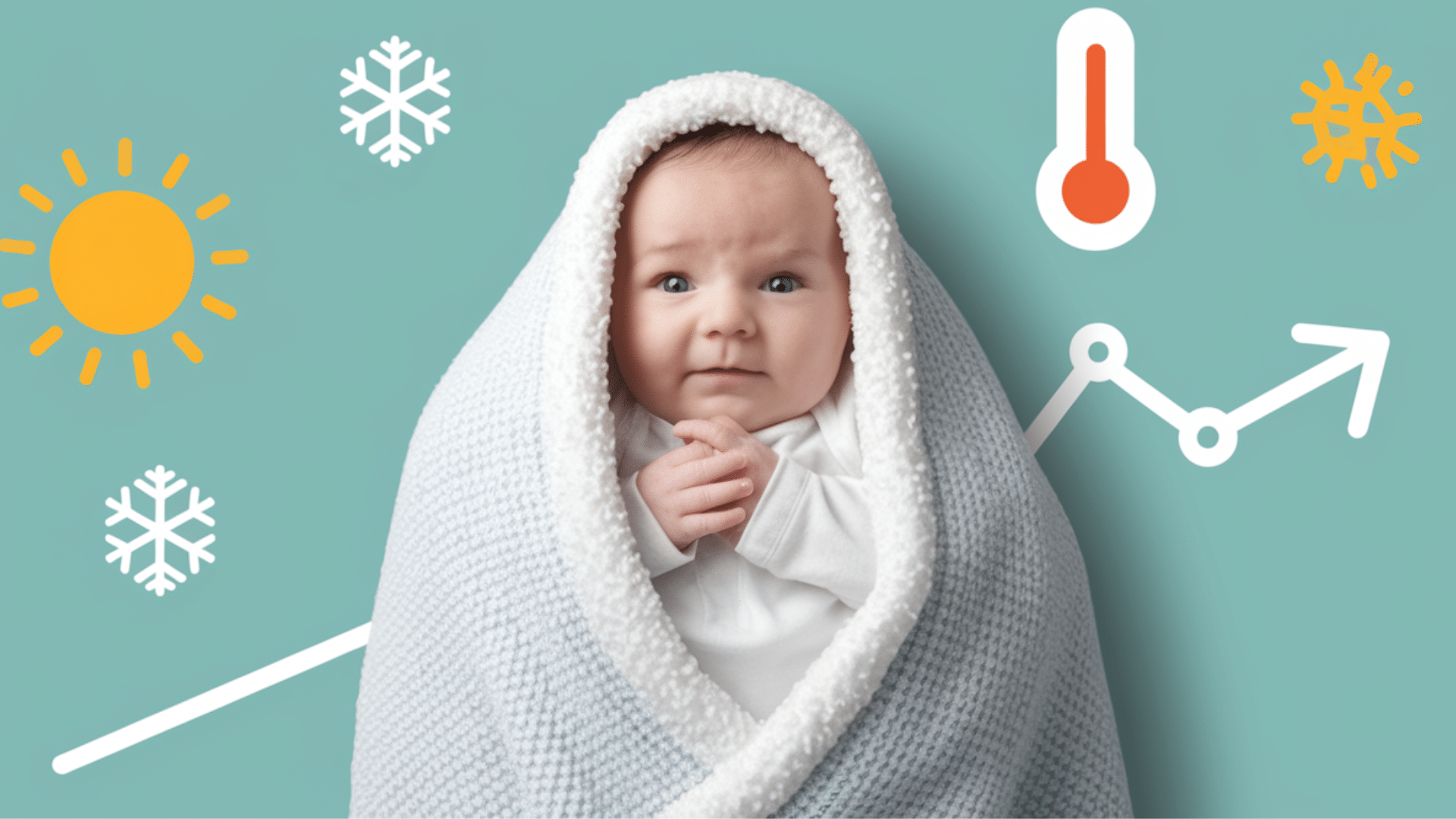
Babies can’t control their body heat as well as older kids or adults. Their bodies are still learning this skill. They lose heat quickly because they have thin skin and small bodies.
This means they get cold faster than we do. Understanding how baby bodies work helps us keep them comfortable.
Did you know? Babies have a larger surface area-to-weight ratio than adults, which means they lose body heat much faster!
What Is a Baby’s Normal Temperature?
A normal baby temperature is about 97-100.3°F (36.1-37.9°C) when taken with a rectal thermometer. Armpit readings are about one degree lower.
Babies’ temperatures change a bit during the day. They’re often cooler in the morning and warmer in the evening. Slight changes are normal, but big swings need a doctor’s check.
When and How Babies Learn to Regulate Temperature
Babies start to control their body heat better around 3-6 months old. Before that, they need our help staying warm. By around 11 months, they’re much better at it.
Premature babies take longer to learn this skill. When sick, babies use crying, moving, and even fevers to help control their temperature.
| AGE | TEMPERATURE REGULATION ABILITY |
|---|---|
| Newborn | Very poor – needs full assistance |
| 3-6 months | Developing – still needs help |
| 11+ months | Much improved – less help needed |
| Premature | Delayed development – extra care needed |
Managing a Cold in Babies
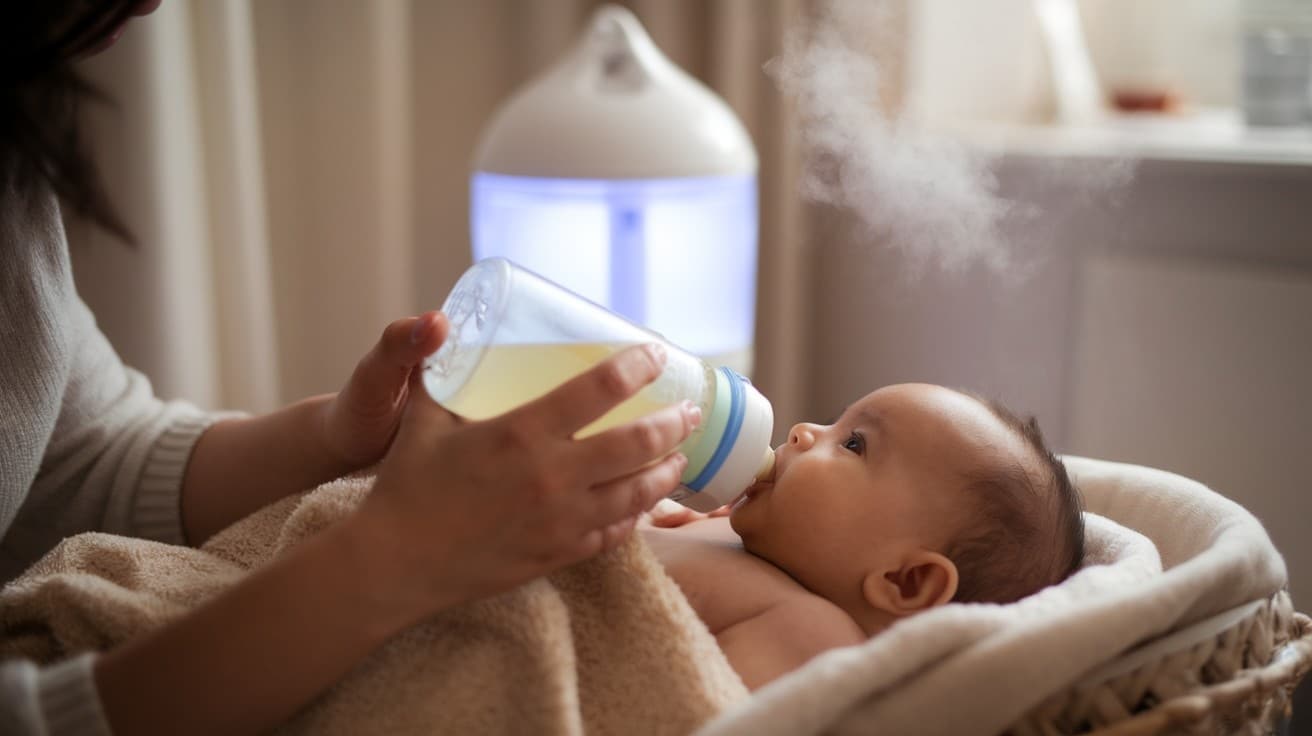
When babies have a cold, it’s different from being cold. A cold is a virus that causes runny nose, cough, and sometimes fever.
Keeping a sick baby comfortable means watching their temperature, helping them breathe easier, and making sure they get enough fluids. Most baby colds get better on their own.
How Long Does a Baby’s Cold Last?
A baby’s cold usually lasts 7-10 days, with the first 3 days being often the worst. A runny nose might start clear but then turn yellow or green. This is normal.
Coughing can last up to 2 weeks. Call the doctor if your baby has trouble breathing, won’t eat, or has a fever that won’t go down.
Strategies to Soothe a Baby with a Cold
Helping a baby with a cold means keeping them comfortable until their body fights off the virus. Here are some simple ways to help:
For breathing relief:
- Use a cool mist humidifier in the baby’s room
- For babies over 6 months, slightly raise the head of the crib mattress
- Hold younger babies upright on your chest when congested
For comfort and recovery:
- Give extra breast milk or formula to maintain hydration
- Watch for wet diapers to check if they’re getting enough fluids
- Provide extra cuddles and rest opportunities
- Keep routines simple while they recover
Pro Tip: No need for fancy equipment – running a hot shower and sitting in the steamy bathroom for 10-15 minutes can help clear congestion.
When to Consult a Pediatrician
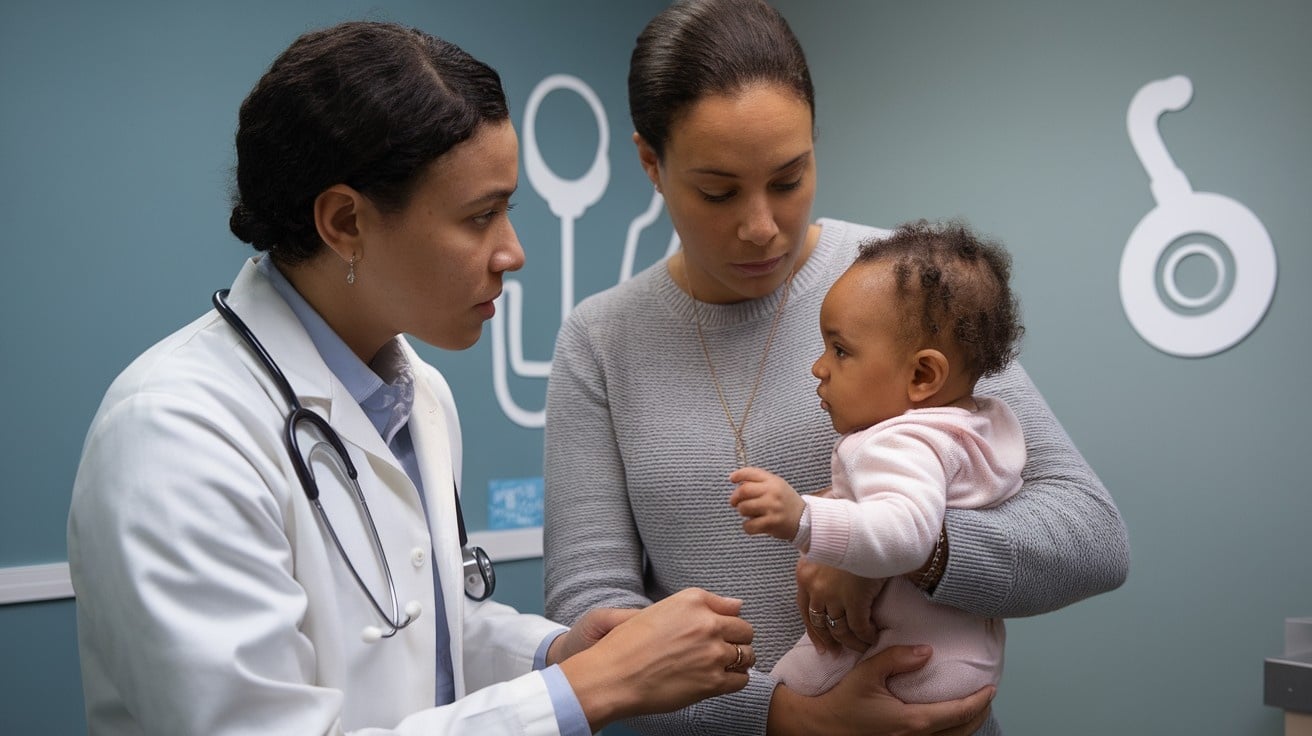
Call your doctor if your baby feels very cold despite wearing warm clothing and being in a warm room. Also, call if they have blue lips or seem unusually quiet.
For babies under 3 months, any temperature over 100.4°F needs medical help. Trust your gut—you know your baby best. It’s better to check than worry.
Wrapping It Up
In summary, recognizing the subtle signs that your baby is cold at night can make a big difference in their comfort and sleep quality. Simple cues like cool skin, fussiness, or disrupted sleep maybe your baby’s way of telling you they need more warmth.
By dressing your little one in breathable, layered clothing and maintaining an ideal room temperature between 68–72°F, you can help them stay cozy without the risk of overheating.
Use safe sleep aids like sleep sacks instead of blankets, and check in on your baby during the night, especially during seasonal changes.
Creating a calm, warm environment encourages better rest and promotes healthy development. Trust your instincts as a parent, and always contact your pediatrician with any concerns.
Your attentiveness ensures a safe, restful night for your baby.
